|
It was another great chance for me to remember some of my past experiences in Pattani Province which many call “Deep-South
Thailand”. The journey to study in the south at Prince of Songkla University completely changed my viewpoint about southern cultures and traditions. With genuine interest
in the surroundings, I spent about four years in the university and almost two years as a teacher in a pretty big high school called Phokhiriratsueksa, which is 30 km from the
city. That day I met the parents of Navaporn Sukumaraphan who came as spectators to a sports event held at the school. In 1980 Pattani Province was a host of the 14th
regional sport competition. I remember that many schools and the government sectors prepared everything for over a year for that one-day sports competition but everyone seemed
happy and wished the event to be successful.
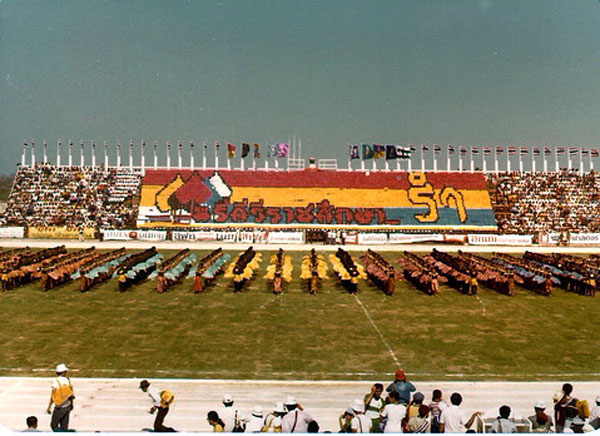
For the preparation, it was obvious that my husband, Kasem Yasovant who used to be the cheer-staff president for
Thammasart University, was immediately responsible for the cheer-stand when he was posted in Pattani Province as a judge
in the justice court. The "letter transformation" stand comprised students from three secondary schools. Apart from his usual
career, he had to help the community and provided a good example for harmony in the society. All schools, vocational
schools, technical colleges and Muslim schools had meetings to plan and prepare for the event. For the opening ceremony, the
Muslim schools prepared the parade of two large mythical bird statues. These two statues were used to welcome guests. The
first bird is called “Burong Singha” whose face resembles a lion. The second one is called “Gakozuror” which is very similar to “Paradisaea”.
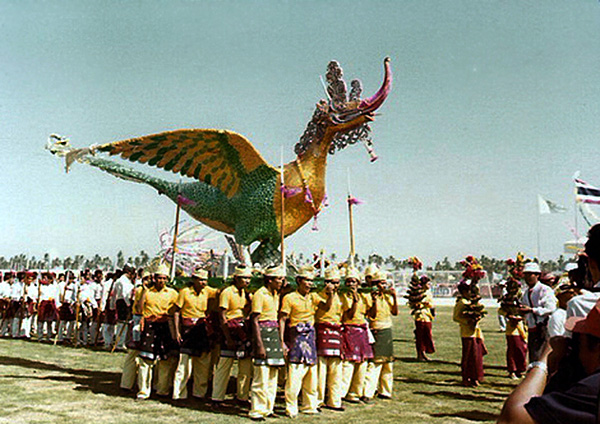
Both kinds of birds are regarded as heavenly creatures. The parade was fascinating for the spectators because the Muslim
men and women wore traditional attire as in very important ceremonies such as marriage. Men wore turbans, silk coats and Selendang trousers. Kris was attached at the waist of each men.
It was as if they wore full uniforms to honor the ceremony. There were three impressive performances of traditional dance
that I could remember. The performances were successful with the help of two art teachers from Phokhiriratsueksa School. One of them whom I would like to mention is Naowarat
Sukumaraphan. He was the spouse of Pimrat Sukumaraphan (Na Nakorn). They had a daughter, Navaporn Sukumaraphan, who earned a scholarship to study Thai traditional dance at
Natasilpa College in Bangkok when she was young (around primary school grade five). In this event she went back home to carry the banner of Phokhiriratsueksa School
Over three decades , time flies
A photographer friend from Facebook, who took pre-wedding pictures. sent me some pictures of a woman carrying a pot on
her head walking down the forest and a link to see a video clip of “Ussaleemala dance”. For me it was magnificent dance. The
woman's pictures reminded me: she had stunning postures. I really wanted to talk to her.
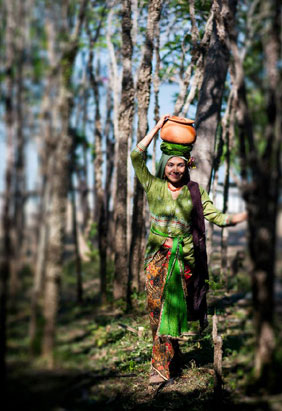
It took a while for me to contact Navaporn on Facebook. At first I couldn't remember her at all: I hadn't seen her for more than
30 years. The first question I asked her was about her personal life and work. I found that she was a daughter of the art teachers
of the school where I went to teach after my graduation. I found that Pattani Province really helped her gain a steady path for her
future as she became a representative of Thailand and went overseas on several occasions.
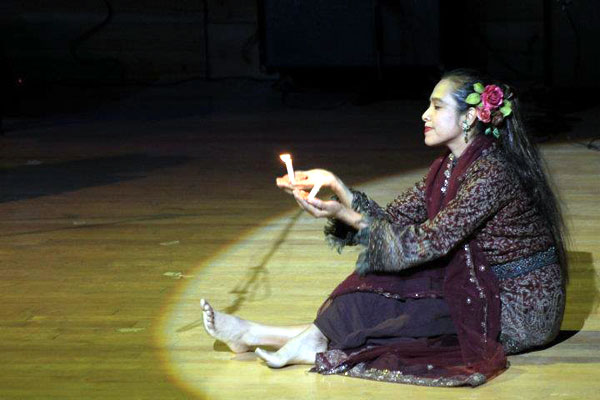
JY: Could you tell me about your life and experience as an artist?
NS: I was a student with a scholarship of Pattani Province. I passed the selection exam and was chosen to study at Natasilapa
College when I was in Primary school-year 5. I studied for years and received a bachelor’s degree there. My major was drama and
my minor was musical art. In 1990 I was a representative for a cultural exchange program with Tajikistan for six months. Later,
20 Thai students and I were contacted for a show at Pyongyang, the capitol of North Korea. To be honest, Koreans have high
discipline. They work quickly and efficiently, something which many of us Thai people lack. In 2000 I was invited to work as a
cultural teacher at the distant education center in New York. The location was at the Thai temple, Wat Buddha Thaithavornvanaram I was a co-teacher with a Thai monk and
we taught both in English and Thai. We had around 300 students who came from various states of America and they had
a chance to join the summer festival. After that, I travelled to teach the art of performance to Thai students who were in
Schengen countries such as Austria, Germany, France and Belgium.
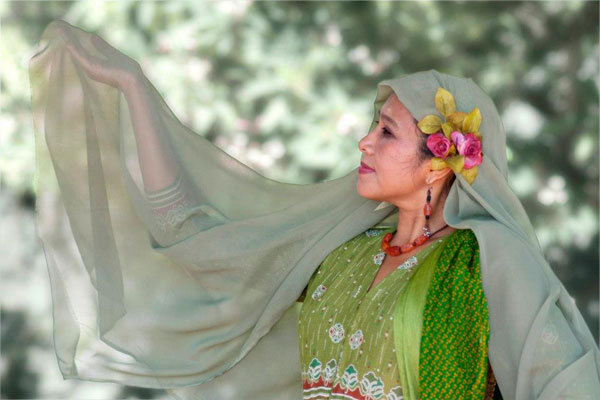
For my personal life, I married a Thai man, resided in NewYork and had a daughter. Unfortunately, my husband died from car
accident many years ago.
I remarried again with a Belgium artist.
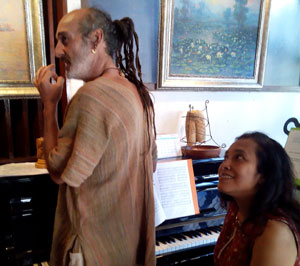
JY: I would like to know about your determination of the work that you are proud of.
NS: Looking back to the regional sports competition in 1980: My mother who came from a family famous for Thai traditional
dance “Na Nakorn” was responsible for three dances in the ending ceremony. The first one was Rong Ngeng dance.
Performed by A couple of men and women. An important performance in three southern provinces for hundreds of year.
With the influence from Western civilization, invading the South of Thailand to create a new colony, men held handkerchiefs and
women had shawls. Over the years, the dance moves, rhythm and musical instruments were changed significantly. The dance
was believed to have originated in Portugal and Spain . Female dancers wore shawls at their necks. The main musical instruments are violins, banjos, accordions, Ramana drums
(from Portugal ), gongs and two-sided drums (also called Indian drums). It can be seen that any dance with a shawl is a tradition
of Malay dance. With research papers and theses, I also used knowledge from my mother . We occasionally worked with the
royal family in Bangkok. Rong Ngeng dance has many details about songs, dance moves, costumes and musical instruments.
The art department tries to preserve the dance so that newer generations of students can learn about it and practice.
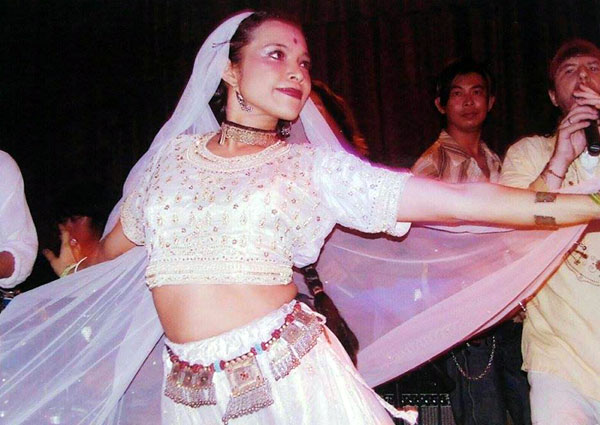
The second one was a traditional fan dance called “Talikeepas”. Actually the fans were made of genuine leather but to save
money in the sports competition my mother decided to use paper fans because they were a lot cheaper. My father and his
team sharpened bamboos for almost a year because the outdoor stage performance required a thousand students. Everyone was
so exhausted but they loved to perform the dance. The Malay fan dance or Talikeepas was influenced by Portuguese and
Hindu culture. The ancient explorers and colonization played an important role with local tradition at Malay cape as well as
Arabian art. We can see that the mix of different arts worked quite well.
The last dance performance to end the sports competition in the night was a candle dance. This dance was very beautiful and
gentle. It was also a mixed performance of Philippines and Indonesia. I used to perform this dance with my team in foreign
countries and many Filipinos cried after seeing this dance.
JY: I want to know your personal opinion about traditional performances and Thai society
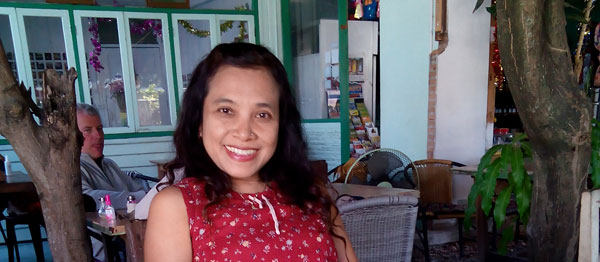
NS: I can tell you now that political issues affect Thai cultural heritage in many ways. Thai people suffered greatly from the
loss of spiritual identity. When we found that cultural art become a business, the disappearance of real identity was unavoidable. For example, using Chinese fans in Thai dance
come from the change of concept and the misunderstanding in art. Another point I want to tell is that lack of manpower can
cause the loss as well. To cope with this, a suitable organization should be established to take care of this issue and support the arts and performers seriously.
Navaporn Sukumaraphan has frequent performances and she is adamant that the preservation of tribal performances in the
north of Thailand is as significant as performances in other regions of Thailand.
|